Home - Butterflies - Swallowtails - Whites and Sulphurs - Coppers, Hairstreaks, Blues & Metalmarks - Brushfoots - Skippers
Photo & Other Details - Characteristics & Utah Range Map
Scroll down to see all photos of IMMATURES - For other photos/information, click on your choice of
ADULT FEMALE EMERGENCE LARVA SPECIMEN
___________________________________________________________________________________________________________________________________________________________________________________________
____________________________________________________________________________________________________________________________________________________________________________________________
Pupa Development
#1 Pupa formed October 24, 2007
Butterfly eclosed 12:05 A.M. November 6, 2007
#1 Pupa - Ventral -
October 24th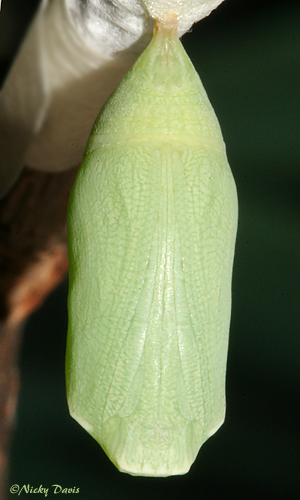 |
#1 Pupa - Lateral -
October 24th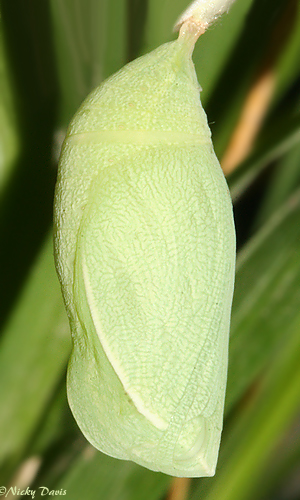 |
#1 Pupa - Ventral - 3:30 P.M. November 5th 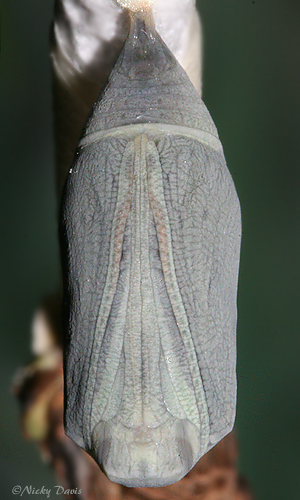 |
#1 Pupa - Lateral - 3:30 P.M. November 5th 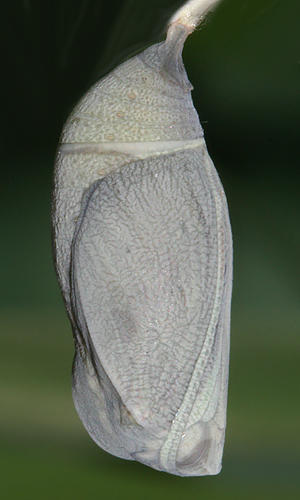 |
#1 Pupa - Ventral - 9:50 P.M. November 5th 2 hours 15 minutes before butterfy eclosed 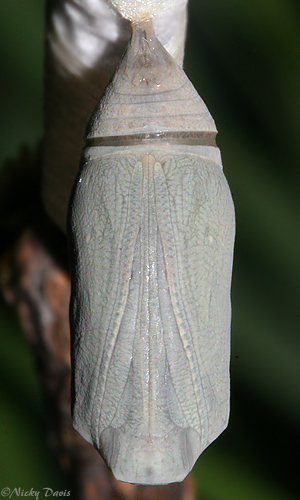 |
#1 Pupa - Lateral - 9:50 P.M. November 5th 2 hours 15 minutes before butterfy eclosed 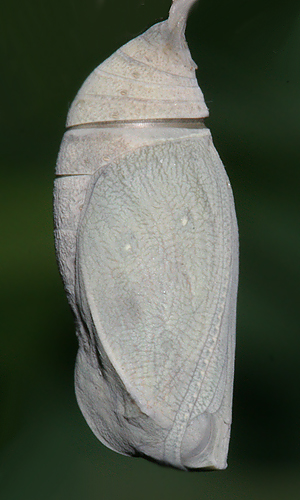 |
#4 Pupa formed November 10, 2007 with quite different colors in an effort to blend in with its surroundings. Some of these pupae were green and some were similar to the one shown below |
|
Ventral 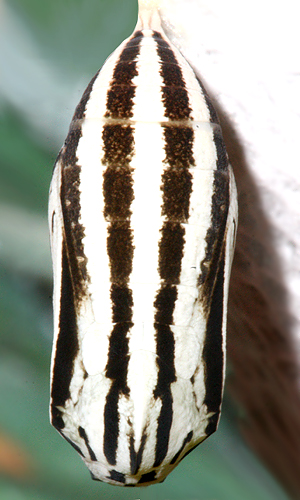 |
Lateral 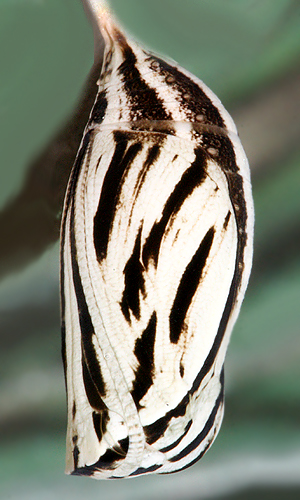 |
| Photo
Details - ©Nicky Davis Female collected by Todd L. Stout - August 2, 2007 - Goodenough Creek, 4.6 miles West of McCammon, Bannock County, Idaho. Of 16 eggs, 12 hatched August 20, 2007. Larva #1 was not placed in diapause for three weeks, but the others were. #1 began feeding September 17, 2007. Pupa On october 21st this larva stopped feeding and began swinging it's head around and walking up and down the grass blades. It was placed into a pupation container and formed a pupa at noon on October 23rd. This caterpillar fed for about 40 days and the pupa eclosed after about 13 days. Description 1 7/8 - 2 11/16 " Dorsal Brown with prominent nearly equal eyespots in the forewing submargin in Rs-M1 and in Cu1-Cu2 and may or may not have paler areas surrounding the eyespots.(This one has a hint of an orange wash about half way around the eyespots) Females may also have an eyespot at the anal angle of the hindwing, larger and more developed forewing eyespots and may be paler overall. Ventral Male and female may have up to 6 eyespots on the ventral hindwing which are ringed with yellow. Postmedian dark band on forewing goes up further than the top eyespot. Univoltine in the north but bi or multivoltine in the south. Hibernation is as first instar larva. Habitat They can be found in grasslands, open woodlands and at edges of woods up to 10,500 feet Host Grasses. This one was started on Bluegrass. Time Spent as Larva - 40 days Pupa - 13 days Back to Top |